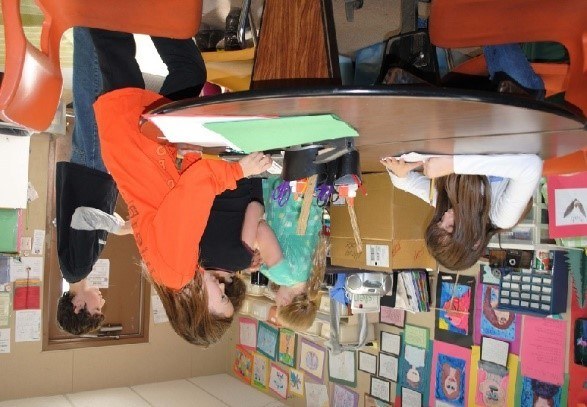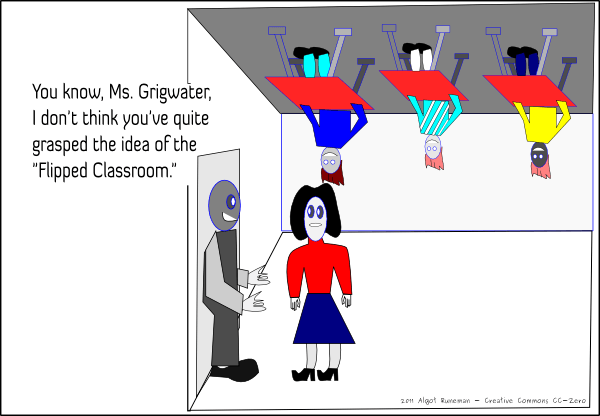Applying Effective Online Teaching Techniques in a Korean Elementary EFL Classroom
“You don’t teach a class, you teach a student”-Ken Bain What The Best College Teachers Do p.97
Teaching English as a Second language is one of the fastest growing fields of education. According to Education Week, “In the last 100 years, the number of foreign-born U.S. residents has grown to about 30 million people - resulting in a corresponding growth in demand for schools to provide effective ESL and EFL programs at all levels of instruction.” With such a growing field, it is important to find out what the most effective practices are in the field. For foreigners living and teaching in another country, the effective practices for online education are easily applied to the ESL classroom.
The Interesting Parallel Between Effective ESL Educator and Effective Distance Educator
I have taught in ESL in Korea for the past 4 years, I have been searching for ways to become a more effective educator. During the course of my research and professional development, I have found an interesting parallel between what makes an effective ESL educator and what makes an effective distance educator. I have lived in an environment where I may not be physically at a distance but culturally; I am over 7,000 miles distant from my students. In this environment, it is important that I find what methods are effective in the classroom, whether it be in a brick and mortar classroom or online. Many students are now exposed to technology in the classroom, whether it be smart boards, net-tops or tablets. Adding a technology component to the EFL classroom can open a lot of doors for students. Whether it is accessing their creative side or allowing them to easily find definitions of words without have to use a dictionary, technology is a boon for the EFL classroom. In addition to adding technology to the classroom, incorporating classroom techniques that are effective online into the class can make a language barrier a hurdle that can be overcome.
“They [students] may have trouble writing an essay but they can create a beautiful video and convey their understanding...” From my personal experience, I have seen that students in my class can easily be frustrated by dry English textbooks. When assigning homework in the classroom, I have often seen students not complete the assignment because they thought it was “too hard”. Often students at the elementary level [where I have taught for the past 3 years] do not have a large enough vocabulary to express exactly what they want to say. This lack of expression can cause frustration and dissuade students from completing other activities. If students have the ability to use multimedia to express themselves, then they can complete the assignment and feel like they have engaged themselves, rather than just going through the motions. When a student “goes through the motions” they rarely, if ever, gain anything from the material. Students have difficulty applying what was taught and often forget the material. If they connect to the material, they are much more likely to remember and apply it.
A group of educators from Middle Tennessee State University recently published an article in the Journal of Online Learning and Teaching regarding the best practices in online teaching. According to Brinhaupt, the best teachers focus on “remarkable results like [a] sustained and deep understanding [of the material]...a [student’s] desire to learn more”. In the article they outline several teaching techniques that effective online educators use to get the most out of their students. The two I have found to be most essential in the EFL classroom are “Fostering Student Engagement” and “Building Rapport with Students”. In the ESL classroom, these best practices serve as the foundation for effective classroom learning.“
[T]he best teachers use meaningful examples, stimulating assignments and thought provoking questions to motivate students...” Fostering student engagement is extremely important to the learning process in the Korean EFL classroom. In my experience in the EFL classroom, the curriculum often provided as a foundation for class is often not engaging. Material is very formulaic and not thought provoking, rather a regurgitation of rote memorization. Students quickly tire of these types of materials when used over and over again. Repeatedly using it is often a ticket for students to check out mentally. When a student “checks out” it become infectious, with other students around him or her also checking out. It is imperative to keep students engaged in the classroom. I have found that I can do this by incorporating different media into the class, whether that be creating collage, or having students use the internet to find interesting materials related to the materials covered in class. I have found that in my experience, engaging student through multiple mediums is the most effective way to teach students, especially at the elementary school level. Using film, PowerPoint, and other multimedia in the classroom keeps students engaged in learning, rather than checked out of the classroom.
Another important factor in engaging students is believing in their ability. “[Teachers] see the potential in every student...and foster intrinsic motivation moving students towards learning goals.” While in the EFL classroom, the primary goal is language acquisition. However, I have found that students can become discouraged and disengaged when they become frustrated. Often this frustration is from not “knowing it all” immediately. This is often the case with younger Korean students. These students often experience a high level of pressure from their parents to learn English quickly. During my teaching career, I have found that keeping students engaged can be accomplished by setting attainable goals in class. In addition to keeping students engaged, students have to want to learn with you. Students want to enjoy spending time with their teacher. This is where developing rapport with students becomes an important part of the learning puzzle.
When I think back to the teachers I learned the most from during my tenure as a student, the ones that come to mind most are the professors that took an active interest in me as a student. Building rapport with these teachers was a critical component of what made these teachers not only memorable, but also effective. Having a personal connection with my professors made me want to learn more. Brinhaupt states in his paper that “...the most essential factor to a successful online education experience is creating a community of learners where the quantity and quality of interactions with peers and faculty foster student engagement.” A key component of creating an environment of engagement in the classroom is building rapport with students. “Building rapport is a crucial element of what the best teachers do.”
The goal of rapport building is “closing the distance gap” between students and teacher. Brinhaupt outlines several activities that are effective for “closing the distance gap”, such as pretests, survey forms and course overviews. However, in a classroom where two completely different languages are spoken, these activities designed to build rapport with students could be quite challenging, and not nearly as effective. However, my experience has led me to believe that even this obstacle can be overcome. My students are naturally curious about me. I am an “alien” in their country. I look completely different than almost everyone else in school, and quite likely one of the few foreigners they have contact with during their daily lives. While they may not have a verbose vocabulary, my students have an insatiable thirst to learn more about me, and I want to learn as much as I can about them. I welcome this thirst and look to make myself as available to them as possible. Brinhaupt writes, “Self-disclosure, through sharing personal stories and experiences can promote bonding.” I want to get to know my students as well as I can and my students want to know more about me. My first class when starting a new semester is a self-introduction lesson, describing my interests, family and home life. Students are often amazed at the similarities between themselves and me, from shared interests in sports, food, music, and television shows to our cultural differences (One particular difference that shocks my students here is the size of my house as compared to their apartment here in Korea.) Something as simple as learning a student’s name can go a long way to keeping a student engaged in class. Fostering a personal connection with a student can go much further in developing their ability than extra hours studying a book.
Applying these best practices to the EFL classroom may be difficult at first. However when applied allow students to grow at an exponential rate. During my tenure as an educator in Korea, I can attest to first hand that educators that apply these best practices are much more effective as teachers. I have seen a wide range of teachers here in Korea, from those who teach here as a stop-gap year while planning to move on to other opportunities to career ESL teachers in Korea. While observing these educators, I have found that those teachers who apply these principles, their students are much more engaged and seem excited to come to class and learn English. In Brinhaupt’s conclusions, he argues that those who take “short cuts” or act as if on “autopilot” in education are much less effective teachers and students are much less effective at actually learning the material. Teachers who successfully apply these best practices, are much more effective teachers. I have strived to incorporate these best practices into my teaching style. I have seen a marked change in my students desire to learn since I first came to teach in Korea. I believe that the conclusions from Brinhaupt’s paper are spot on.
Works Cited
- Ash, K. (2011, June 15). Language arts educators balance text only tactics with multimedia skills. Education Week, 17.
- Brinhaupt, T. S. (2011). What the best online teachers do. Journal of Online Learning and Teaching, 7(4), 1-6. Retrieved from http://jolt.merlot.org/vol7no4/brinhaupt_1211.htm
- ESL lessons on the web. (2012, January 12). Retrieved from http://www.educationworld.com/a_lesson/lesson/lesson224.shtml








